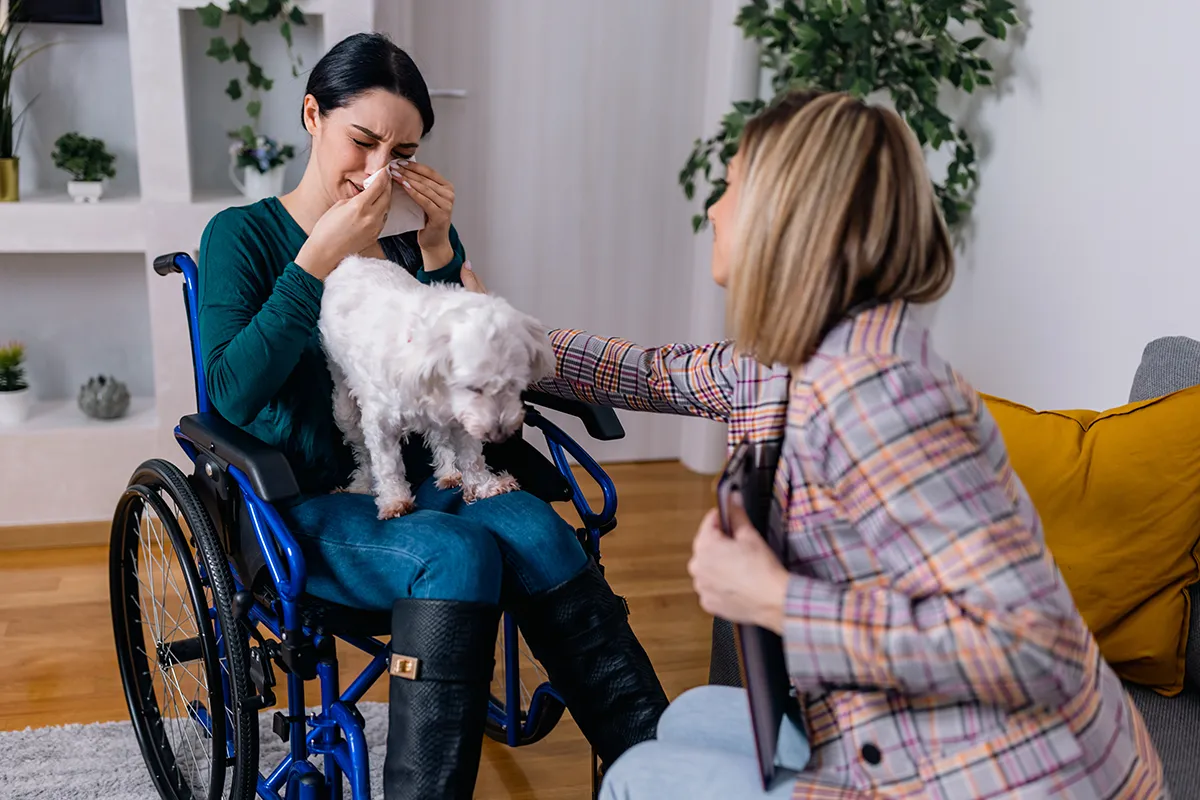Elder abuse is a prevalent yet underreported issue in the United States. Numerous risk factors contribute to elder abuse, including a lack of education and awareness of the issue. Here are some fast facts about the reality of elder abuse in our communities and the impact abuse has on our elderly population.
Fast Facts on Elder Abuse
- Elderly women are more susceptible to abuse compared to elderly men, according to the National Institutes of Health (NIH) and the National Center on Elder Abuse (NCEA).
- According to the U.S. Department of Justice, approximately 10% of individuals aged 65 and older experience at least one form of abuse annually. Many will experience multiple forms of abuse.
- The U.S. Census Bureau projects that by 2060, the population of Americans aged 65 or older will reach 95 million.
- The need for nursing home care among seniors was 1.2 million in 2017, and based on data from the Population Reference Bureau, it is expected to rise to 1.9 million by 2030.
- The New York State Office of Children and Family Service found a significant underreporting of elder abuse, citing that only 1 in nearly 24 cases of elder abuse is reported to the authorities.
Abuse Statistics by Type
Abuse commonly evokes the ideas of physical abuse; however, other forms of abuse, such as cases of financial and emotional abuse, can sometimes greatly outnumber other forms.
Here are some statistics based on the varying types of abuse:
Financial Abuse
Financial abuse involves the theft or embezzlement of funds from an elder, often by caregivers, friends, or relatives exploiting the elderly’s accumulated savings.
Statistics on elder financial abuse:
- Annually, seniors are defrauded of at least $28.3 billion annually due to financial abuse and exploitation, though figures are estimated to be even higher due to underreporting.
- Only one in every 44 instances of financial abuse is reported, according to the National Adult Protective Services Association (NAPSA).
- According to NAPSA, seniors who fall victim to financial abuse face three times the risk of death and are four times more likely to require nursing home care.
- Financial abuse can take hold in various forms, such as identity theft, unauthorized use of debit or credit cards, lottery and telemarketing scams, internet fraud, or the misuse of a power of attorney.
- Seniors who live with an unemployed child or one battling substance abuse issues are at a heightened risk of experiencing financial abuse.
One effective prevention strategy is to have a trustworthy family member or attorney manage, or jointly manage, the elderly adult’s financial accounts, ensuring all family members are informed about this arrangement to maintain transparency.
Emotional Abuse
Emotional abuse among the elderly can take many forms, such as yelling, belittling, or isolating them from family, friends, and loved ones. Additionally and unfortunately, seniors who suffer from mental illness and disorders such as Alzheimer’s and dementia are at higher risks of abuse compared to their cohorts.
Emotional abuse statistics:
- Caregivers are identified as perpetrators of emotional abuse towards seniors more frequently than spouses or other family members, as reported by the Office on Women’s Health (OWH).
- A study published in 2010 by the Journal of American Geriatrics Society found that between 28-62% of seniors with dementia suffered psychological abuse from their caregivers.
- In a 2014 study from the Journal of Elder Abuse and Neglect, 38% of elders reported experiencing verbal abuse at least once.
- Emotional abuse can be particularly insidious as it often leaves no visible injuries, making it crucial for families to be alert to changes in their loved one’s mood as potential indicators of emotional harm.
Indicators of emotional abuse may include symptoms such as anxiety, irritability, or a specific fear of certain residents or staff, especially pertinent for seniors residing in nursing homes.
Physical Abuse
Physical abuse can result in lasting injuries or irreversible disabilities for seniors and, in some instances, can lead to death.
Physical Abuse Statistics
- Seniors subjected to physical abuse face a risk of premature death that is 300% higher than those who haven’t experienced abuse, according to the National Council on Aging
- Spouses or intimate partners are identified as the primary perpetrators of physical abuse, responsible for almost 60% of all incidents
- According to a report by the World Health Organization, 2 in 3 nursing home and long-term facility staff admitted to committing abuse in the past year.
It is crucial for elders who suffer physical abuse to receive medical care immediately and to avoid returning to the living situation with the caregiver or spouse responsible for the abuse.
Sexual Abuse
Sexual abuse encompasses any non-consensual sexual interaction with a senior, potentially causing both physical harm and profound psychological distress, along with the risk of sexually transmitted diseases in some instances.
Sexual abuse statistics:
- According to the Department of Justice (DOJ) and the World Health Organization (WHO), sexual abuse is the least reported form of elder abuse.
- Since 2000, there have been nearly 16,000 reported instances of sexual abuse in nursing homes, as documented by the Administration for Community Living.
- At least 500 facilities have been cited for failing to investigate and report investigations of sexual abuse at their facility
4 Ways to Prevent Elder Abuse
- Get Trained: Mandated Reporter Training can help you learn the signs and risk factors of elder abuse and get the information you need to report it effectively.
- Report Suspected Abuse: If you suspect elder abuse, you don’t have to investigate it yourself. Make a report with local Adult Protective Services, law enforcement, or a long-term care ombudsman.
- Check-In Regularly: ask your elderly family members, neighbors, or community members how they’re doing. Look and listen for signs of abuse or neglect.
- Support Caregivers: unpaid caregivers, especially those caring for dementia patients, experience substantial emotional, financial, and physical difficulties.
Abuse can come in many different forms and places; however, simply being aware of what is happening in the community around you will make a difference. Depending on where you work and your position, you may be required to take training on how to identify and report abuse. If you would like to learn more about becoming a mandated reporter or are required to fulfill compliance requirements, you can sign up and become certified today at MandatedReporterTraining.com.
If you are a financial professional, you can also complete up to 2 continuing education credits. Learn more here.



